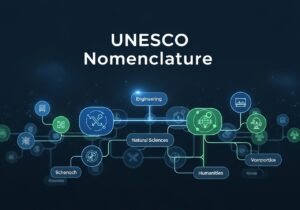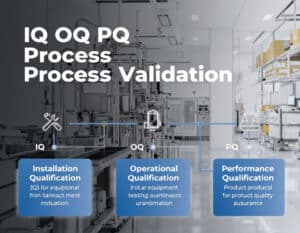Successfully invalidating a competitor’s patent is a powerful maneuver that extends far beyond simply winning a legal dispute. Patent invalidation provides immediate freedom to operate, allowing a company to develop and sell products without the threat of costly infringement litigation or licensing demands. More than just a defensive shield, patent invalidation serves as an offensive tool that can dismantle a rival’s market monopoly, level the competitive playing field, and neutralize threats from patent assertion entities.
Important: in patent invalidation, more than on our other posts on patenting for engineers, a patent lawyer or attorney specialist, is more than recommended.
Benefits

Invalidating a competitor’s patent provides significant defensive and offensive advantages that directly impact a company’s ability to compete.
The most immediate benefit is securing “freedom to operate,” which allows the company to develop, manufacture, and sell its products without the looming threat of an infringement lawsuit and the associated crippling legal costs or royalty payments.
Successfully nullifying a patent can also serve as a powerful offensive maneuver, clearing the market of a competitor’s monopolistic barrier and opening it up for the company and others to innovate and compete on a level playing field. This not only saves the company from potential licensing fees but can also disrupt the business model of patent-holding entities (trolls) that rely on licensing weak or overly broad patents for revenue.
Beyond the immediate legal and competitive relief, invalidating another’s patent yields substantial long-term strategic and financial rewards. It enhances a company’s reputation and establishes it as a formidable player in its industry, capable of defending its technological space. This can deter future frivolous infringement claims. Financially, removing a blocking patent can significantly de-risk a company’s operations, making it more attractive to investors and potentially increasing its market valuation.
Patent Invalidation Strategies
Substantive Grounds for Invalidation
Substantive grounds for patent invalidation refer to the core legal requirements that an invention must meet to deserve patent protection. These grounds focus on the invention itself and its description within the patent, rather than procedural mistakes made during the application process.
Challenges on substantive grounds attack the fundamental merit and legitimacy of the claimed invention’s right to a patent monopoly. These can be because of:
Prior art (anticipation or lack of novelty): this is one of the most common strategies and involves finding evidence that the invention was already known to the public before the patent’s filing date. This evidence, known as “prior art,” can be in the form of earlier patents, published articles, or any public disclosure that describes the invention. If a single piece of prior art discloses every element of the claimed invention, the patent can be invalidated for lacking novelty.
Prior public communication: it is a broad concept that encompasses any form of disclosure that makes the information about the invention available to the public. This directly creates “prior art” and is used to challenge a patent on the grounds of novelty (anticipation) or obviousness. Examples include a published academic paper, a presentation at a scientific conference, a publicly accessible website, or a doctoral thesis in a university library. The core issue is that the knowledge of the invention was placed in the public domain, triggering almost immediately a patent invalidation.

This is very frequent as the information could be:
- the company grounded its R&D on on university thesis or research, or their employees brought their ideas …
- the company searched for investors
- the company did some market research to evaluate the potential of the innovation …
- beta tests ….
Obviousness (lack of inventive step): even if an invention is new, it may not be patentable if it is considered obvious to a person with ordinary skill in the relevant field. This strategy involves demonstrating that the invention is a predictable combination of known elements from multiple prior art sources.
For experienced engineer, this parameter is hard to grasp, as the “ordinary skill” bar for a patent to be declared as a novelty, can seem quite low.
Insufficient disclosure (lack of enablement and written description): a patent must provide a detailed and clear description of the invention so that a person skilled in the art can replicate and use it without undue experimentation. If the patent fails to provide this level of detail, it can be invalidated for lack of enablement or an inadequate written description.
Non-patentable subject matter: patent laws in most jurisdictions exclude certain categories from patentability, such as abstract ideas, laws of nature, and natural phenomena. This strategy argues that the patent’s subject matter falls into one of these excluded categories.
FYI: the “patentability” of human DNA discussion was related to this.
Prior public use or sale: with some commonalities with prior art (the invention was already known to the public before the patent’s filing date), a patent can be invalidated if the invention was communicated, in public use or offered for sale before the patent application was filed (subject to grace periods in some countries like the U.S.). This strategy requires providing evidence of such public use or commercial activity that predates the critical date of the patent filing.
Note: “public communication” is not the same, although they are closely related concepts that can often overlap in a patent invalidation case. The key difference lies in what is being made public: the information about the invention versus the activity involving the invention.
- A public use involves using the invention in its natural and intended way in a public setting, even if the inner workings are not fully understood by the observers. For example, demonstrating a new type of drone at a public park.
- An on-sale bar is triggered when the invention is offered for sale, even if no actual sale occurs. The purpose of this rule is to prevent an inventor from commercially benefiting from their invention for too long before filing for a patent.
While a public use or an offer for sale often involves a “public communication” that discloses the invention, it doesn’t have to. The activity itself is the trigger for invalidation, making it a distinct and powerful tool for challenging a patent’s validity.
Incorrect inventorship:a patent must correctly identify all of its inventors. If an inventor is omitted or someone is incorrectly named as an inventor,...
You have read 44% of the article. The rest is for our community. Already a member? Log in
(and also to protect our original content from scraping bots)
Innovation.world community
Login or Register (100% free)
View the rest of this article and all members-only content and tools.
Only real engineers, manufacturers, designers, marketers professionals.
No bot, no hater, no spammer.
Related Readings
- Patent landscape analysis: assessing the competitive landscape to identify trends and gaps in technology.
- Freedom to Operate (FTO) Analysis: evaluating whether a product can be developed without infringing existing patents.
- Design around strategies: techniques for altering a product design to avoid patent infringement.
- Litigation risk assessment: analyzing the likelihood and potential impact of patent litigation on product development.
- Reverse engineering techniques: analyzing competitor products to identify potential patent infringements or design alternatives.
- Intellectual property strategy development: creating a comprehensive strategy for managing patents and innovations.
- Risk management in product development: identifying and mitigating risks associated with patent infringement during the design process. These topics can help organizations navigate the complexities of patent law while fostering innovation and effective product development.
External Links on
International Standards
(hover the link to see our description of the content)
Glossary of Terms Used
Computed Tomography (CT): a medical imaging technique that uses X-rays and computer processing to create cross-sectional images of the body, allowing for detailed visualization of internal structures and tissues. It enhances diagnostic capabilities by providing three-dimensional representations from two-dimensional data.
Deoxyribonucleic Acid (DNA): a molecule composed of two strands forming a double helix, consisting of nucleotides that encode genetic information through sequences of four bases: adenine, thymine, cytosine, and guanine. It serves as the hereditary material in most living organisms.
Freedom to Operate (FTO): a legal assessment determining whether a product, process, or technology can be developed, manufactured, or sold without infringing on existing intellectual property rights held by others.
Initial Public Offering (IPO): a process through which a private company offers its shares to the public for the first time, allowing it to raise capital from public investors while becoming publicly traded on a stock exchange.
Institute of Electrical and Electronics Engineers (IEEE): a professional association dedicated to advancing technology in electrical engineering, electronics, computer science, and related fields through publications, conferences, and standards development. It fosters innovation and collaboration among professionals and researchers globally.
Large Language Models (LLM): statistical models trained on vast text datasets to understand and generate human-like language. They utilize deep learning techniques, particularly neural networks, to predict word sequences and perform various natural language processing tasks.
Public Domain: a legal status indicating that works are free from copyright restrictions, allowing anyone to use, modify, and distribute them without permission or payment. This status can arise from expiration of copyright, explicit dedication by the creator, or lack of copyright eligibility.
Unique Selling Point (USP): a distinctive feature or benefit that sets a product or service apart from competitors, aimed at attracting customers by addressing specific needs or preferences.
United States Patent & Trademark Office (USPTO): federal agency responsible for granting patents and registering trademarks in the United States, promoting innovation and protecting intellectual property rights. It examines applications, issues patents, and maintains a database of registered trademarks.
Work in Progress (WIP): items that are partially completed in a production process, including raw materials, labor, and overhead costs incurred up to a certain point. These assets are not yet finished goods and are essential for tracking production efficiency and inventory management.




















